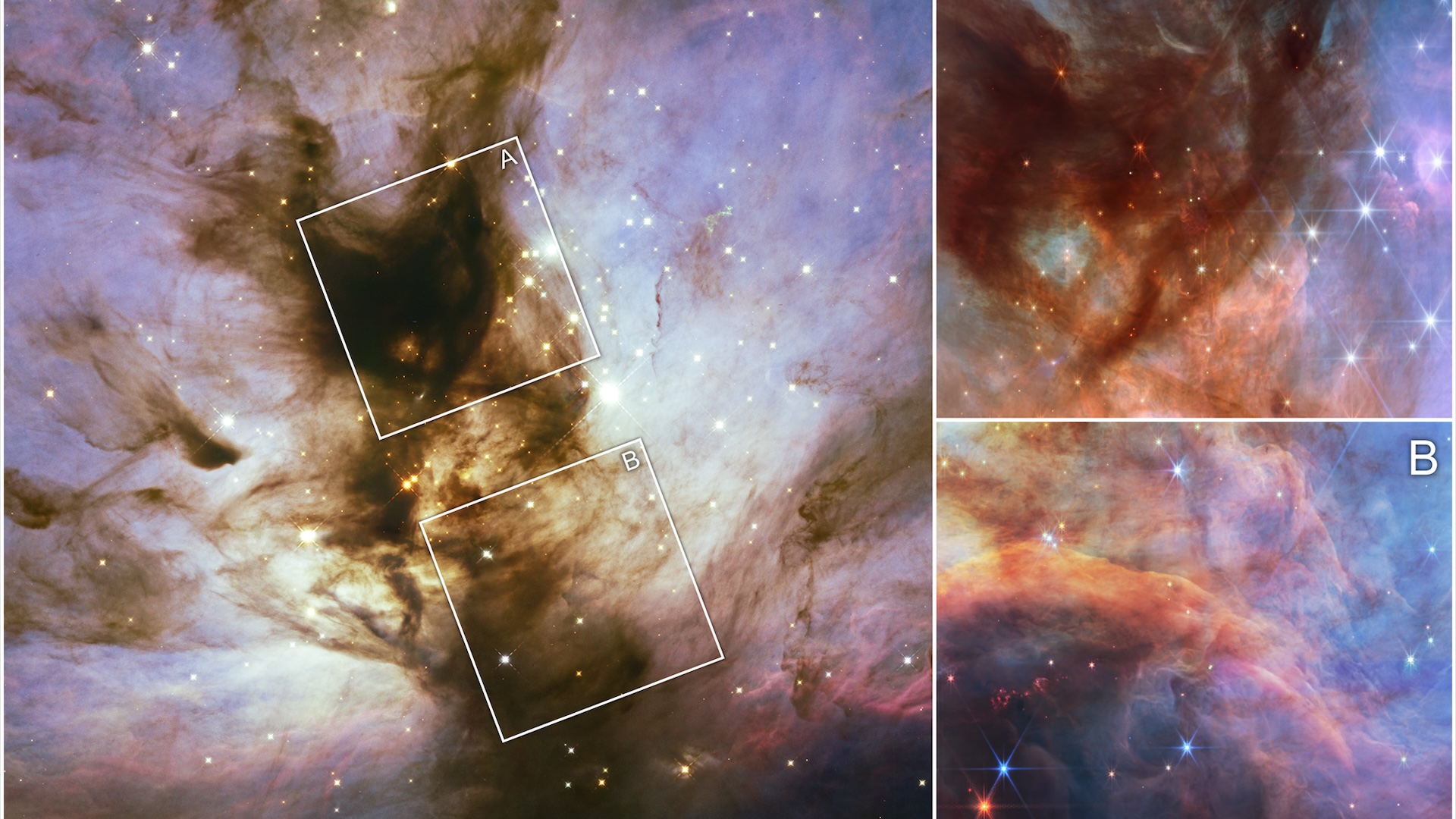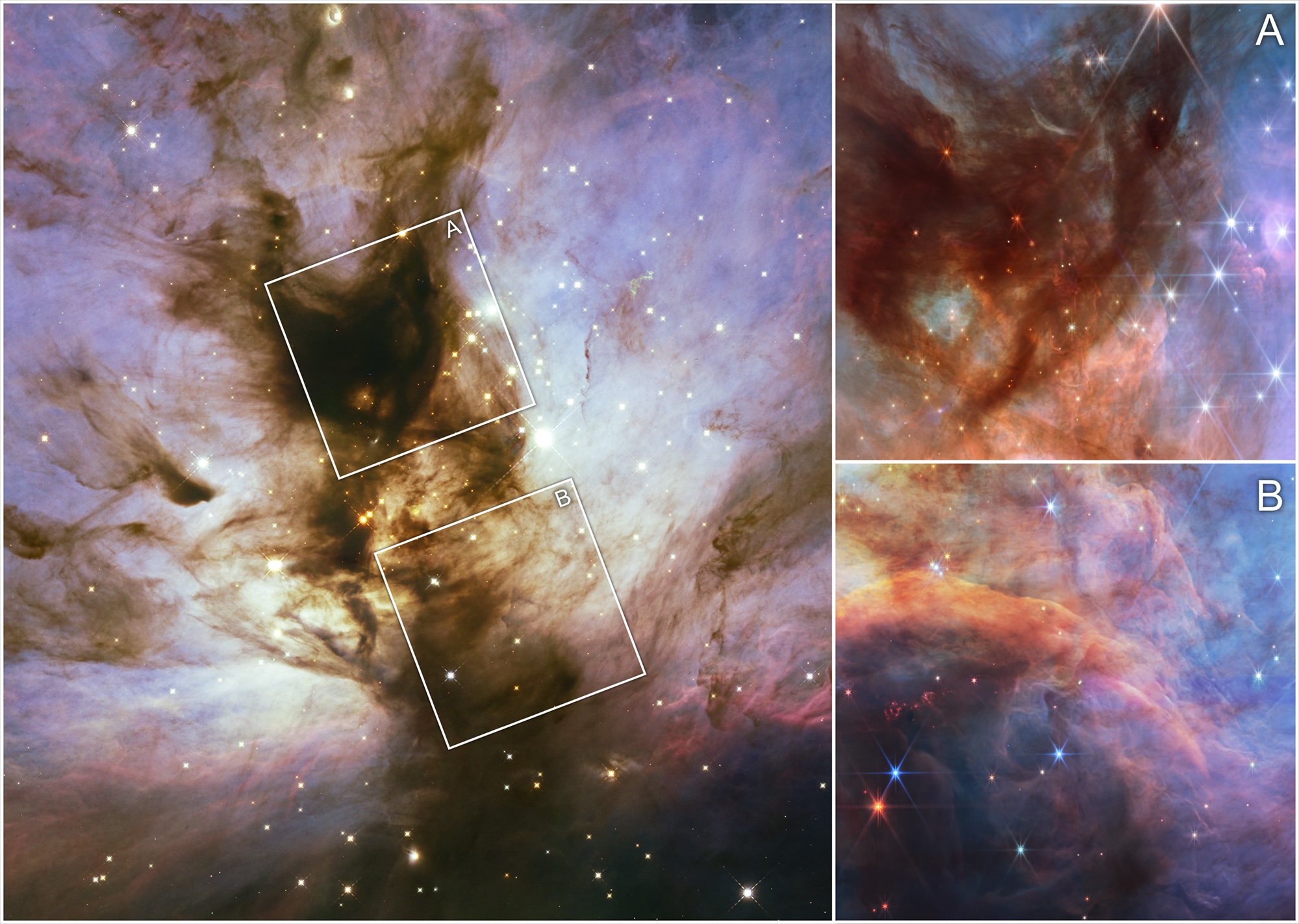
What it is: The Flame Nebula (NGC 2024) star-forming region
Where it is: 1,400 light-years away, in the constellation Orion
When it was shared: March 10, 2025
Why it's so special: What are the smallest stars? A deep dive into the star-forming Flame Nebula by the James Webb Space Telescope (JWST) has revealed free-floating, Jupiter-size objects that could help answer that key question in astronomy.
The free-floating objects are brown dwarfs, which straddle the line between stars and planets. Brown dwarfs are often called "failed stars" because they don't get dense and hot enough to become stars and, instead, eventually cool to become dim, hard-to-see objects.
However, exactly how small a brown dwarf can be is a mystery, largely because these objects are impossible to study using standard telescopes. But JWST is sensitive to infrared light, which it sees as heat. The telescope went looking for relatively warm and bright young brown dwarfs in the Flame Nebula, whose dense dust and gas proved no match for its infrared detectors.

Related: 42 jaw-dropping James Webb Space Telescope images
It found free-floating objects two to three times the mass of Jupiter, though the telescope is capable of finding objects half the mass of the gas giant. That's smaller than scientists expected.
NASA's Hubble Space Telescope has been hunting for brown dwarfs for decades. Previously, Hubble identified possible candidates in a region of the Flame Nebula called the Orion Molecular Cloud Complex. Now, JWST has picked up the baton and completed what scientists called "a quantum leap" in understanding brown dwarfs.
"It's really difficult to do this work, looking at brown dwarfs down to even ten Jupiter masses, from the ground, especially in regions like this," Matthew De Furio, an astronomer at the University of Texas at Austin and lead author of a study published this week in The Astrophysical Journal Letters, said in a statement. "Having existing Hubble data over the last 30 years or so allowed us to know that this is a really useful star-forming region to target. We needed to have Webb to be able to study this particular science topic."
The researchers hope JWST's ability to split the light from an object into its constituent wavelengths will help them clarify the boundaries between a planet, a brown dwarf and a full-fledged star.
For more sublime space images, check out our Space Photo of the Week archives.







